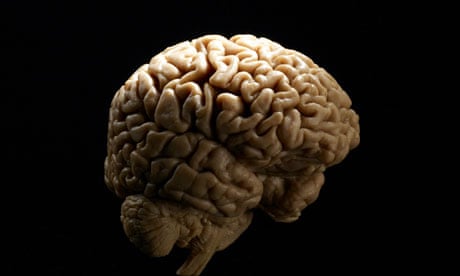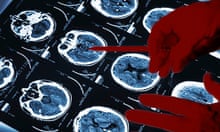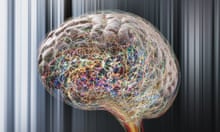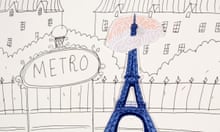From self-help and business success books to job applications and smartphone apps, the theory that the different halves of the human brain govern different skills and personality traits is a popular one. No doubt at some point in your life you've been schooled on "left-brained" and "right-brained" thinking – that people who use the right side of their brains most are more creative, spontaneous and subjective, while those who tap the left side more are more logical, detail-oriented and analytical.
Too bad it's not true.
In a new two-year study published in the journal Plos One, University of Utah neuroscientists scanned the brains of more than 1,000 people, ages 7 to 29, while they were lying quietly or reading, measuring their functional lateralization – the specific mental processes taking place on each side of the brain. They broke the brain into 7,000 regions, and while they did uncover patterns for why a brain connection might be strongly left or right-lateralized, they found no evidence that the study participants had a stronger left or right-sided brain network.
Jeff Anderson, the study's lead author and a professor of neuroradiology at the University of Utah says:
It's absolutely true that some brain functions occur in one or the other side of the brain, language tends to be on the left, attention more on the right.
But the brain isn't as clear-cut as the myth makes it out to be. For example, the right hemisphere is involved in processing some aspects of language, such as intonation and emphasis.
How, then, did the left-brained/right-brained theory take root? Experts suggest the myth dates back to the 1800s, when scientists discovered that an injury to one side of the brain caused a loss of specific abilities. The concept gained ground in the 1960s based on Nobel-prize-winning "split-brain" work by neuropsychologists Robert Sperry, and Michael Gazzaniga. The researchers conducted studies with patients who had undergone surgery to cut the corpus callosum – the band of neural fibers that connect the hemispheres – as a last-resort treatment for epilepsy. They discovered that when the two sides of the brain weren't able to communicate with each other, they responded differently to stimuli, indicating that the hemispheres have different functions.
Both of these bodies of research tout findings related to function; it was popular psychology enthusiasts who undoubtedly took this work a step further and pegged personality types to brain hemispheres.
According to Anderson:
The neuroscience community has never accepted the idea of 'left-dominant' or 'right-dominant' personality types. Lesion studies don't support it, and the truth is that it would be highly inefficient for one half of the brain to consistently be more active than the other.
Yet, despite Anderson's work and other studies that continue to disprove the idea that personality type is related to one or the other side of the brain being stronger, my guess is that the left-brained/right-brained vernacular isn't going away anytime soon. Human society is built around categories, classifications and generalizations, and there's something seductively simple about labeling yourself and others as either a logical left-brainer or a free-spirited right brainer.
Similar to the Myers-Briggs test – another widely used personality test with limited scientific evidence – the left-brained/right-brained thinker theory provides us with an explanation for why we are the way we are, and offers insights into where we fit into the world. It's also a great conversation starter – and if used as a novelty, or a way to strengthen the "weaker half" of your brain, the myth is pretty harmless.
The problems start, however, when the left-brained/right-brained myth becomes a self-fulfilling prophecy. When your 12-year-old fills out an online personality test that pegs her as a "right-brainer" and she decides to skip her math homework – because the test told her she isn't good with numbers – the persistence of this false dichotomy starts to become destructive. The same goes for the unemployed worker who forgoes applying for their dream job because the job description calls for creativity skills they think they may not have.
What research has yet to refute is the fact that the brain is remarkably malleable, even into late adulthood. It has an amazing ability to reorganize itself by forming new connections between brain cells, allowing us to continually learn new things and modify our behavior. Let's not underestimate our potential by allowing a simplistic myth to obscure the complexity of how our brains really work.




